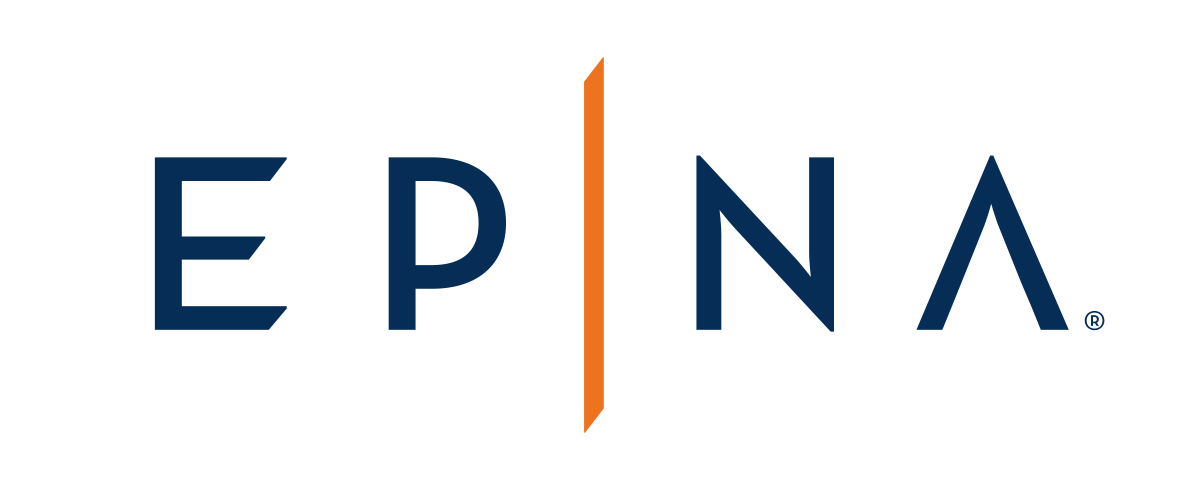
Mitigating Chargebacks: How to reduce the cost and hassle of disputed transactions.
Chargebacks can be a costly part of accepting credit cards. However, the risk of chargeback can be managed by making sure the customer is satisfied with their service or purchase and that payment processes are followed correctly. There are many reasons for chargebacks, but the most common are returned goods, canceled services, quality disputes, processing errors, and fraud.
How to Reduce Chargebacks
Below you will find tips and best practices to reduce the hassle and cost of chargebacks based on method of card acceptance:
For Card Present transactions:
- Make sure your point of sale systems are up to date and transactions are processed on EMV terminals.
- When utilizing an EMV terminal to accept chip cards at the point of sale, the liability shifts for a chip transaction from the merchant to the card issuer in the event of a chargeback for fraud reason codes.
- If it is a signed a transaction, while checking the signature, also compare the name and card number on the transaction receipt.
- If you are unable to dip a card through an EMV point-of-sale terminal or swipe the card on a non-EMV device, you must obtain a manual imprint of the card. This manual sales slip must be signed by the customer and show the transaction date, authorization code, purchase amount, your information (business name, location) and description/itemization of goods or services. Keep a legible imprint for the transaction for your records in a secured, locked place.
- Keep a record of your sales receipts
- Ensure sales vouchers are legible
- Make sure transactions are easy to identify
- Respond to retrieval requests within the specified time frame and provide all transaction related information.
Card Not Present Transactions:
Transactions such as mail order, telephone order, and online are at more risk for chargebacks.
Tips to Avoid Chargebacks in a Card Not Present Environment
- Be clear about return, refund, and cancellation policies
- Be careful when logging transactions
- Keep customers informed on the status of their transactions
- Do not process the transaction until you are ready to ship the product.
Disputes claiming fraud or unauthorized use:
To reduce the risk of chargebacks for fraudulent or unauthorized transactions:
- Keep a transaction record – By maintaining a record of problematic customers, you can identify high-risk transactions, block specific credit card numbers, and disallow future purchases.
- Multiple Orders – By limiting the number of transactions per hour, day, or week from a specific customer, you may reduce risk of potential fraud.
- Address Verification Service (AVS) – This is a fraud reduction service that allows you to verify a cardholder’s address prior to completing the sale. The AVS system indicates whether there is a full, partial, or no-match response during address verification by comparing an address in the card issuer’s database. Remember, you should always ask the cardholder for his/her address – as indicated on their monthly statement.
- Know our customers – You may avoid chargebacks simply by getting to know your customers. For example, record the customer’s telephone number, then call back to verify the order.
- Customer service phone number – Make sure your customer service phone number is printed on the receipt and on the cardholder’s credit card statement along with the sales transaction. This makes it easier for customers to resolve disputes by phone rather than through the chargeback process. EPNA includes this information as part of our merchant boarding process.
- CVV2/CVC2 security – The card brands have this three-digit code security feature printed on the back of their cards (four digits on the front of American Express cards), which you can verify as an additional security check. On its own, this does not guarantee that a chargeback won’t happen, but used together with other prevention processes, it is highly effective.
- Secure transactions – If you run an e-commerce business and accept online payments, ask us about our encrypted solution with add-ons that can help you manage your customer’s card data with ease. EPNA offers a platform that is encrypted at entry, encrypted in transit, and encrypted at rest. Businesses who serve repeat customers can opt to add tokenization to their EPNA online account to securely store cards on file.
- Signatures on file – Process all transactions separately and obtain cardholder agreement/authorization for each transaction even if you know your client and have her/his signature. Remember, signature on file is not an accepted signature if fraud is suspected.
- Learn to recognize the card issuer’s Bank Identification Number (BIN). If a card was not issued in the cardholder’s country of origin, we suggest you do not accept it. If you would like to confirm the issuing Bank Country, please contact us at 847-895-6002.
Recurring Transactions
To avoid canceled recurring transaction chargebacks, you should take immediate action when a customer asks to cancel a recurring transaction.
Respond quickly to receipt requests. When the card issuer requests that you provide a copy of the transaction receipt on behalf of the cardholder, it is called a retrieval request. There is always a respond-by date on a retrieval notification, and it is important that a copy of the receipt is sent no later than this date.
Credit Refunds
To prevent credit-not-processed chargebacks, quickly process refunds to your customers. Your customer should always be made aware of your cancellation or refund policy in writing. Be sure to have your refund/cancellation policy clearly printed on the transaction receipt.
If the cardholder cancels the order that is the subject of an Advance Deposit Transaction, you must complete a Credit Transaction Receipt, which includes all of the following:
- Transaction amount
- Cardholder’s name
- Cardholders account number and expiration date
- Cardholder’s telephone number and mailing address
- Cancellation code that you give to the cardholder
- The words “Advance Deposit” on the Credit Transaction Receipt signature line
If you use a website to sell goods and services, your refund and cancellation policy should be on your checkout screen with an “I agree” button that the customer must click on prior to completing the transaction.
If you do not give refunds or offer in-store credit only, this information should be included on your transaction receipt.
Please bear in mind that you should process credits within 15 days from the date when goods were returned by the cardholder.
Frequently Asked Questions
What is a Dispute?
A “dispute” provides an issuer with a way to return a disputed transaction. When a cardholder disputes a transaction, the issuer may request a detailed explanation of the problem from the cardholder. Once the issuer receives this information, the first step is to determine whether a dispute situation exists. There are many reasons for disputes—those reasons that may be of assistance in an investigation include the following:
- Merchant failed to get an authorization
- Merchant failed to obtain card imprint (electronic or manual)
- Merchant accepted an expired card
When a dispute right applies, the issuer sends the transaction back to the acquirer and disputes the dollar amount of the disputed sale. The acquirer then researches the transaction. If the dispute is valid, the acquirer deducts the amount of the dispute from the merchant account and informs the merchant. Under certain circumstances, a merchant may respond to a dispute to its acquirer. If the merchant cannot remedy the dispute, it is the merchant’s loss. If there are no funds in the merchant’s account to cover the disputed amount, the acquirer must cover the loss.
What is a Chargeback?
A chargeback is a transaction that is formally disputed by the cardholder or the cardholder’s issuing bank. Chargebacks can be a costly part of accepting card payments. Excessive chargeback rates may result in loss of revenue, damage to your company’s reputations, penalties imposed by card networks (Visa, MasterCard, etc.) and even termination of your account. It is essential that you minimize chargeback risk at the time of the sale by complying with card associations guidelines and requirements. When we defend your cases, we send a dispute response to the issuing bank.
What is a Retrieval Request?
This is a request for transaction information from the cardholder’s bank; e.g., a copy of a receipt, invoice, or proof of cardholder signature. A retrieval can be requested for up to 12 months from the sale date. Therefore, it is important to keep your receipts for this timeframe. When a copy of the transaction receipt is requested, you will receive a copy request notice. If the retrieval request is not acted upon quickly or you provide an illegible sales draft, it may evolve into a chargeback, at which time your account may be debited for the amount of the disputed transaction.
Can a Chargeback be escalated?
Yes. A chargeback consists of several stages. The first stage is a first chargeback, which can be defended in a dispute response. The issuer and cardholder have the right to escalate the chargeback to next stages, which can be either a second chargeback or pre-arbitration (depending on the Card Network). If there is still a disagreement with the dispute at this point, the chargeback case goes to the final stage – Arbitration.
What is Arbitration?
Arbitration is the final stage of the dispute process. The decision-making body is the relevant Card Network i.e., Visa, MasterCard, Amex, Discover). You will be responsible for all fees, penalties, and the transaction value if your case is not successfully defended. Arbitration committees impose fees to the losing side of the dispute, which can reach $500 USD or more.
What is Compliance?
A Compliance is an alternative procedure regarding card network regulations for a dispute when no chargeback code is applicable. It places the same financial liability as a chargeback; therefore, if you receive a compliance notification letter, you must provide documentation to support the dispute.
In case of a fraudulent transaction, does EPNA contact the relevant authorities on my behalf?
If a business is a victim of fraud, the business owner would need to contact the appropriate law enforcement authorities to report the fraud.
What is Good Faith?
The Card Networks have implemented time frames for receipt of documentation. Should you supply the requested documents outside those time frames, an attempt may be made to present the documents to the card issuing bank. This is known as Good Faith. However, there is no guarantee that the card issuing bank will consider any documentation that is presented late. Therefore, it is critical to respond within the time frame specified in the chargeback notification.
What is Duplicate Processing?
In the event the cardholder claims that a single transaction was processed twice, the dispute reason is duplicate processing. The responsibility is on the merchant to provide proof to the contrary. To defend chargebacks for this reason, we would require documentation from the merchant for both the transaction in dispute and the documentation of the transaction claimed by the cardholder. The documentation should include signed sales receipts, invoices, booking confirmations, and/or contracts.
What is meant by “Not as Described?”
This applies when the goods or service ordered were not the same as described on the sales receipt or related documentation. Documentation required to defend such chargebacks are written proof that service or merchandise was correctly described, proof that merchandise received was not damaged, and a written explanation regarding the dispute with the cardholder. It is critical that the courier services you use to deliver merchandise to the cardholders obtain a signature at the moment of delivery.
This applies when the cardholder claims that the stated service was not received or was paid for by alternative means. The documentation required to defend such chargebacks is: signed proof of delivery, signed proof of receiving service invoice, written explanation.
Who is liable for a card-not-present transaction?
If the card is not presented to you at the time of the sale, in the event that the cardholder subsequently disputes the transaction, you may be liable for the transaction, as it cannot be fully secured. See page 23 on our Chargeback Guide to view a substitute receipt for card-not-present transactions.
If the cardholder claims that the transaction was fraudulent, and if 3D Secure* verification was performed, the responsibility of the transaction lies with the issuer. However, transactions processed through 3D Secure can still be disputed for chargeback reasons other than fraud.
*3D Secure authentication is a technical standard created by Visa (Verified by Visa) and MasterCard (SecureCode). This service enables buyers to validate transactions they make over the internet by requesting a personal code (usually sent to their cell phone or email address as a one-time PIN). It helps protect against fraudulent use by unauthorized individuals.
Can insurance coverage be obtained for a card-not-present transaction?
Individual transactions cannot be insured, but you can reduce the risk by utilizing security features such as 3D Secure. In order to increase safety for card-not-present transactions, Visa and MasterCard developed the security standards Verified by Visa and MasterCard SecureCode. Both methods are based on 3D Secure technology and verify online payments with a credit card by the legitimate cardholder through a password interrogation process. This guarantees security against fraud; however, chargebacks can still be raised under different reasons (duplicate charge, service/goods not as described, etc.)
EPNA offers Safe-T coverage to protect your business in case of a security breach along with our PCI compliance program.
What is a Declined Transaction?
This indicates that the issuer did not approve the transaction. Please do not continue with the transaction and request an alternative method of payment.
What is a Fraudulent Transaction?
A fraudulent transaction is a transaction in which the cardholder did not authorize or participate. You must supply proof that the cardholder participated in the transaction.
What transaction methods are considered fraud preventive?
As per card network rules, transaction processing methods that are fraud preventive are: properly processed chip, contactless, magnetic stripe read (if card does not bear a chip), and 3D Secure transactions. Transactions processed through key entry, mail/telephone order, and unsecured online transactions hold greater risk.
What is “Not Matching Account Number?”
This means the transaction card details are not on the issuer file. This occurs when a card number is taken incorrectly on a manual transaction or if an account is closed.
What is “Paid by Other Means?”
The cardholder claims that the transaction was paid by an alternative method (cash, other credit/debit card, voucher) and yet the credit/debit card was charged for the same purchase. The documentation required to defend such chargebacks is proof that both transactions are valid (payment by alternate method and credit/debit card payment), invoices, written explanation.
What is “Credit not Processed?”
The cardholder has not received the defined refund following return of goods or cancellation of service as agreed. The documentation required to defend such chargebacks is proof that the refund was processed, proof that the cardholder was informed about the cancellation policy, transaction receipt or other records to prove you properly disclosed a limited return or cancellation policy at the time of the transaction.
What is “Proper disclosure of Terms and Conditions?”
According to card network rules, the cardholder must accept the terms and conditions stated prior to accepting a transaction. For internet transactions, you should have a “click to accept” button for the cardholder, which if not marked, does not allow the purchase to continue. For transactions taken “on site” in the presence of the cardholder, you should obtain the signature under the terms and conditions, which should also bear a statement that the cardholder acknowledged prior to processing the transaction. The terms and conditions cannot be presented to the cardholder after confirming the purchase nor available for review under a separate link. You must assure the cardholder cannot proceed with the purchase until the terms and conditions are accepted; otherwise, you may face financial loss in case of chargeback.
For more information about reducing chargebacks, download our Chargeback Guide.


